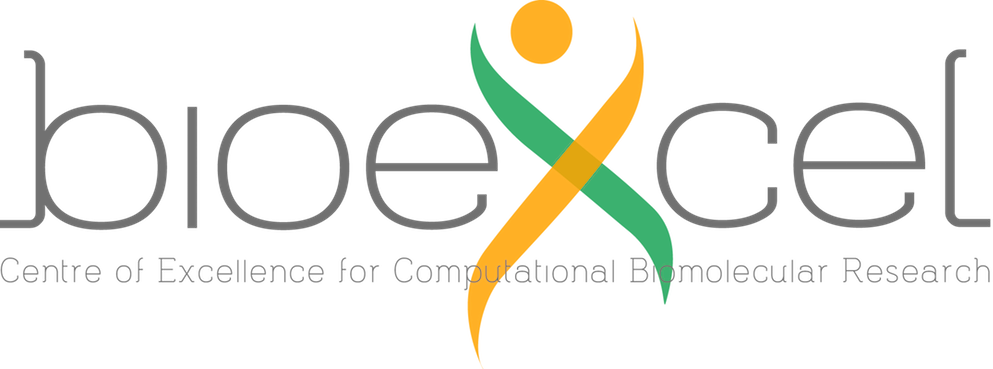HADDOCK v2.4
Settings
Associated HADDOCK params: Modifiable by EASY users Modifiable by GURU users
Other: External link
Default settings
Input structures
- File format for the PDB files must follow the wwPDB standards wwPDB format standards
- The server supports docking from ensembles of structures. For this simply submit a PDB file containing multiple models (Note that they should all contain exactly the same number of atoms and the different models should be surrounded by MODEL and ENDMDL records).
- It is possible to either download a PDB directly from the RCSB database or to provide your own PDB. pdb_mode
- If within one submitted structures multiple unconnected bodies are detected, additional distance restraints will automatically be defined to keep the bodies together (e.g in an antibody).
Configuration
Number of structures generated
Ambiguous Interaction Restraints (AIRs)
-
Only active/passive residues can be used as restraints in EASY mode, no restraints file or
center-of-mass restraints can be provided.
activereslist passivereslist
-
You can choose to either defined passive residues yourself, to no provide any or to let HADDOCK defined
them as the closest residues from the active residues you have provided. In automatic mode, the passive
residues are taken as all residues that have a solvent accessibility higher than 15% and at least one
atom at less than 6.5A from any atom of an active residue.
auto_passive auto_passive_radius
By default, 50% of the AIRs will be randomly deleted for each docking trial (%excluded=100/number of partitions).
Flexibility treatment
Semi-flexible residues are automatically defined from an analysis of intermolecular contacts (<5.0A).
Protonation state of histidines
-
The protonation state of histidines is automatically defined by using MolProbity/Reduce.
his_#_state MolProbity
Co-factors and ligands
- Missing parameter and topology files for co-factors and small ligands are automatically obtained from PRODRG. PRODRG
DNA/RNA restraints (if applicable)
- The type of the molecule must have been explicitly set by the user. moleculetype
-
Backbone dihedral angles restraints: values measured from input structure.
Pucker restraints: measured from input structure.
Planarity restraints: on a per base basis.
Hydrogen bond restraints (DNA only): from detected base-pairs.
Hydrogen bonds restraints
- In which iteration should the restraints start being applied, default: it0 hbond_firstit
- Note: The default value was changed from it1 to it0 on 16/Nov/2020
Clustering parameters
- Default method: FCC (vs RMSD) clust_meth
- Default cut-off: 0.6 clust_cutoff
- Default minimum size: 4 clust_size
Final scoring
-
After itw, the reported scores and energies are averages calculated over the top four members of a cluster.
The HADDOCK score is defined as:
HADDOCK-score it0 = 0.01*Evdw + 1.0*Eelec + 1.0*Edesolv + 0.01*Eair - 0.01*BSA
HADDOCK-score it1 = 1.0*Evdw + 1.0*Eelec + 1.0*Edesolv + 0.1*Eair - 0.01*BSA
HADDOCK-score itw = 1.0*Evdw + 0.2*Eelec + 1.0*Edesolv + 0.1*Eair
w_elec w_vdw w_desolv
Restraints validation
- All restraints (distances, hbonds, dihedral angle, RDCs and diffusion anisotropy) are submitted to a strict validation by the server. They should comply to CNS syntax.
Refinement settings
Parameters
Water Refinement
- A solvent shell is built around the complex and, subsequently, a series of short MD simulations are performed according to the parameters below, all atoms except the side-chain atoms at the interface are restrained to their original position. Next, 1250 MD steps are performed at 300 K with position restraints for heavy atoms which are not part of the PPI (residues not involved in intermolecular contacts within 5 Å). Finally, the system is cooled down (1000 MD steps at 300, 200 and 100 K) with position restraints on the backbone atoms of the protein complex, excluding the interface atoms.
Parameters
Energy Minimization Refinement
- This protocol is the same as Water Refinement but here the water shell is not built, meaning only an energy minimization will be performed.
Parameters
Coarse-grain Refinement
- In short, we first generate the corresponding MARTINI-based coarse-grained representation for each of the models to be refined; then, by a combination of energy-minimizations and short molecular dynamics stages, the protocol fits the atomistic structure of each of the components onto the generated CG model of the complex and optimizes the system to remove clashes. The resulting models are then scored and ranked according to the HADDOCK score.
Simulated annealing with centroid restraints
- This refinement protocol consists of a semi-flexible simulated annealing refinement (it1 stage of HADDOCK) with restraints on the center of masses of the components of the complex, followed by a final energy minimization.
Number of models
- It is possible to refine single structures as well as molecular complexes. Ensembles are also supported and must be formatted using the PDBTools' pdb_mkensemble. The maximum number of models supported in an ensemble is 100.
- Link to PDBTools webserver




